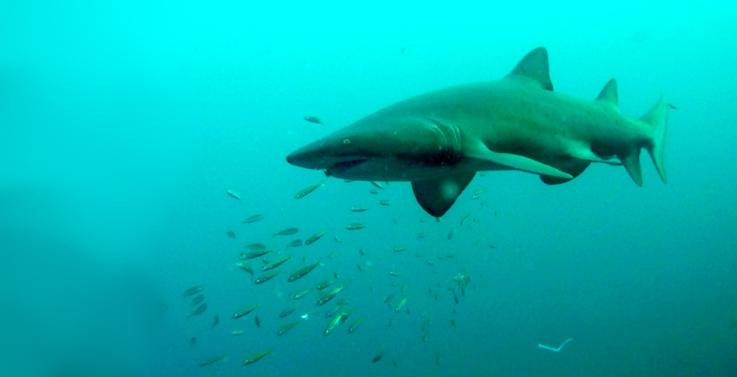
Research shows grey nurse sharks are curious, not aggressive, with divers who respect shark diving etiquette.
The study published in the Tourism Management journal and featured recently on Discovery News, indicates that scuba diving tourism can exist with the critically endangered grey nurse sharks, as long as divers behave a particular way and strictly follow guidelines.
PhD research student Kirby Smith, an experienced diver herself, previously noted that the sharks would exhibit disturbing behavior, such as erratic swimming and jaw gaping, around particular divers.
Smith and colleagues assessed diver and shark interactions at four sites along the Australian east coast to understand the triggers for this behavior and study the feasibility of scuba diving tourism as a potential avenue of conservation for these shark species.
They found that sharks did not threaten divers who left them to follow their normal swimming patterns. They instead appear to display intense, non-threatening curiosity about them, and even hover, cruise and mill around such well-behaved divers.
"We witnessed how the sharks will passively approach divers before slowly moving past them and remaining within close range," Ms Smith said. "Sometimes more than 30 large sharks at a time will come right up to particular divers and harmlessly check them out."
Other fundamental guidelines for swimming with grey nurse sharks include not touching, feeding, chasing, harassing or in any way interrupting the sharks. Divers must also not block the entrances to caves or gutters, not wear mechanical devices, or dive in groups totaling more than 10 divers, or up to 12 provided the extra two are diving instructors or guides.
Ms Smith's supervisor, Dr Carol Scarpaci, said it was a significant study because very little research had been carried out on shark-diver interactions, unlike with more widely studied seals and dolphins.
Grey nurse sharks, also known as sand tiger sharks, grow to over 3 meters (10 feet) in total length; have a stocky appearance and three rows of exposed teeth on the upper and lower jaws that protrude from the mouth. They are classified as critically endangered, with an estimated 1146 to 1662 individuals in the wild.
